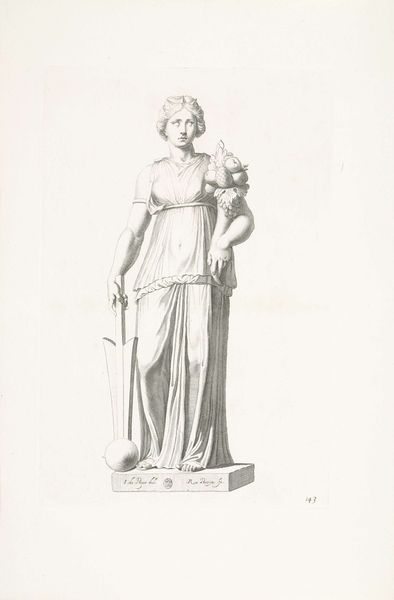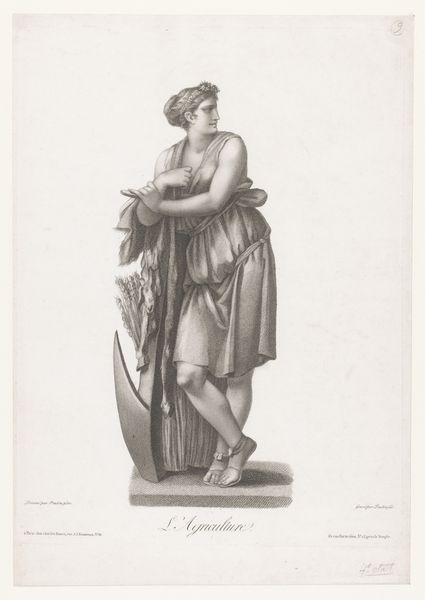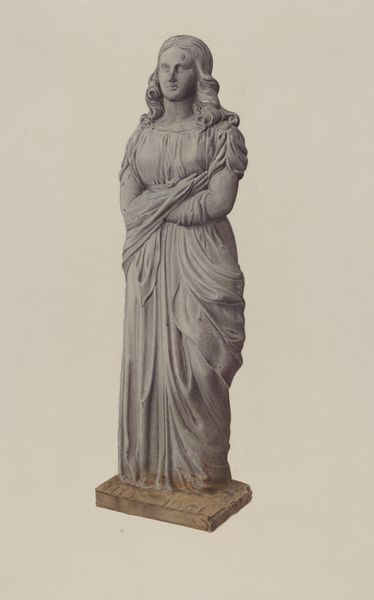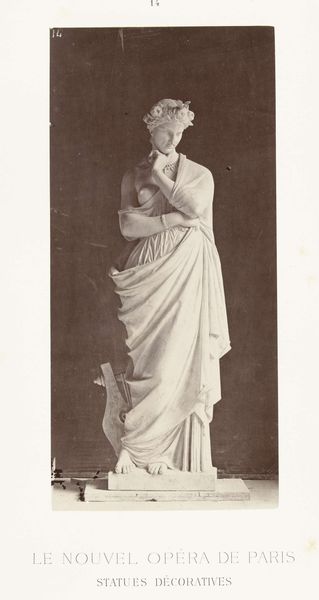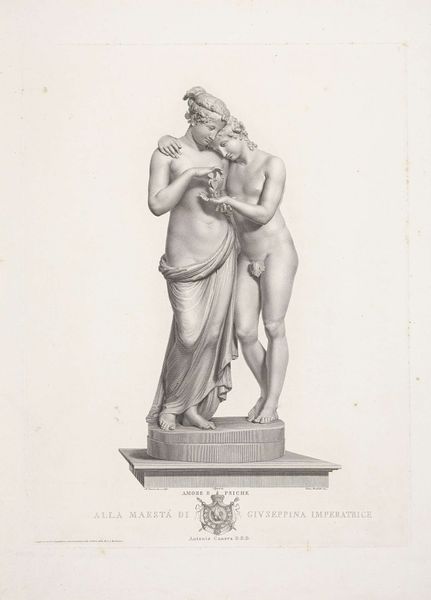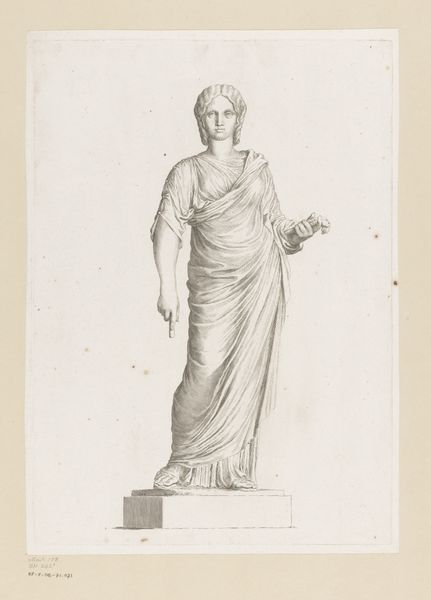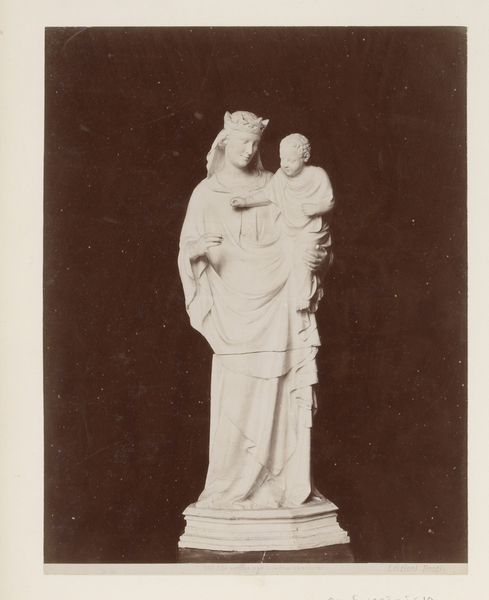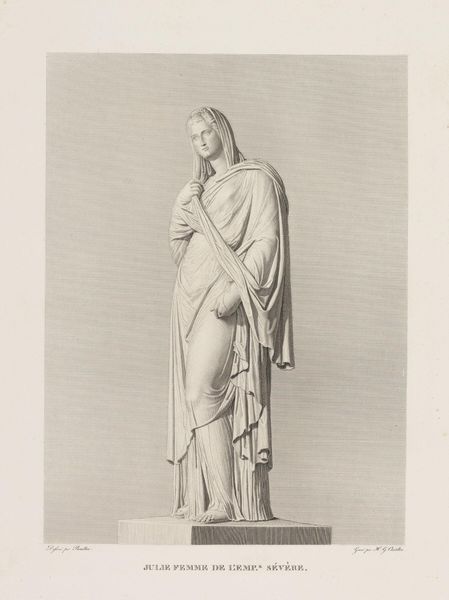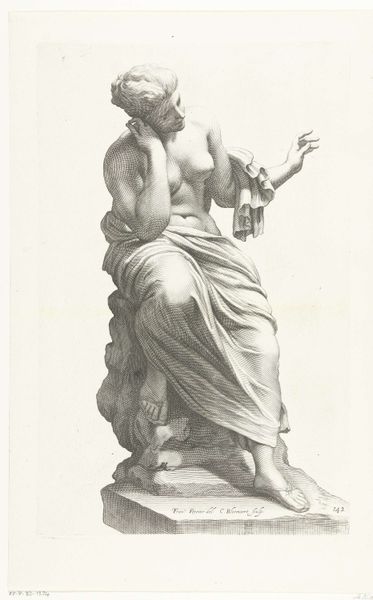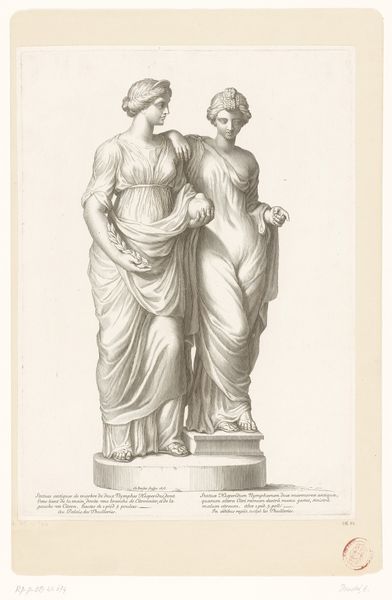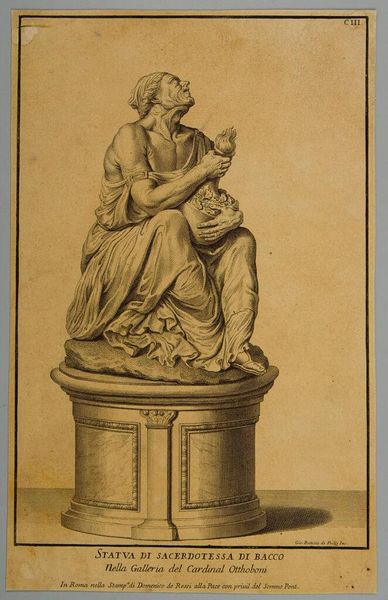
Domitia as Hygeia, after the Antique c. 19th century
0:00
0:00
Dimensions: 46 x 33.5 cm (18 1/8 x 13 3/16 in.)
Copyright: CC0 1.0
Curator: Henri-Guillaume Chatillon's "Domitia as Hygeia, after the Antique," presents Domitia, wife of Roman Emperor Domitian, in the guise of Hygeia, the Greek goddess of health. Editor: There's a striking stillness in this image. The figure is so self-contained, almost serene, despite the snake, a symbol often associated with transformation, coiling around her arm. Curator: It's a lithograph, about 46 by 33 centimeters, referencing classical statuary. Placing Domitia within this idealized, deified context certainly speaks to the political climate of the time, doesn't it? Editor: Absolutely. And framing her as Hygeia, suggests a commentary on power, health, and perhaps even imperial authority. It makes me think about how women in positions of influence navigated those spaces. Curator: Right. Domitia's portrayal reflects the performative aspects of imperial identity and the cultural expectations surrounding female figures. Editor: Seeing this through a contemporary lens, it raises questions about the representation of women in power and the male gaze, how much agency Domitia truly had in crafting her image. Curator: It's a potent reminder of how art serves as a mirror reflecting societal values and power structures. Editor: Indeed, and in exploring this piece, we're also asking vital questions about gender, representation, and the ongoing dialogue between the past and present.
Comments
No comments
Be the first to comment and join the conversation on the ultimate creative platform.
